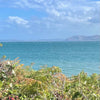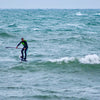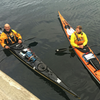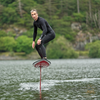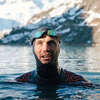Life-Saving Gear: Why Properly Fitted Buoyancy Aids Are a Must-Have for Kayakers and SUPers

Discover the importance of wearing a well-fitted buoyancy aid while kayaking or SUPing in the UK.
Learn how to fit a buoyancy aid properly and take essential safety precautions to ensure an enjoyable and safe water sports experience. Read our informative blog post now.
Water sports like kayaking and stand-up paddleboarding (SUP) are incredibly popular in the UK. They're a fantastic way to explore the country's beautiful waterways and coastline, and offer an exciting and rewarding experience for people of all ages and abilities.
However, it's important to remember that these activities come with a degree of risk, and it's crucial to take the necessary safety precautions to ensure you stay safe and have an enjoyable experience. One of the most important safety precautions you can take is to wear a buoyancy aid or lifejacket.

It's important to note here the difference between buoyancy aids and life jackets. While both are designed to help keep you afloat, there are some key differences. Buoyancy aids are designed to provide buoyancy and support, but allow for greater freedom of movement, making them ideal for activities like kayaking and SUPing.
They typically have less buoyancy than life jackets and are not designed to turn an unconscious person face-up in the water. Life jackets, on the other hand, are designed to turn an unconscious person face-up in the water and provide more buoyancy than buoyancy aids. They're often used in situations where there's a greater risk of immersion or when sailing in open water.

Buoyancy aids, as mentioned above are designed to help you stay afloat in the water if you fall in or capsize your kayak or SUP. They're essential for anyone taking part in water sports, and can be the difference between life and death in an emergency situation.
The RNLI recommends that anyone taking part in kayaking, SUP or other water sports should wear a well-fitted buoyancy aid at all times.
So, what are the key indicators of a well-fitting buoyancy aid?
- The PFD (Personal floatation device) should be snug but not too tight, allowing you to move freely without the vest riding up or shifting around.
- Your vest should have adjustable straps (usually on the shoulders and sides) to ensure a comfortable and secure fit, and a sturdy buckle to keep the aid firmly in place.
- Finally, it should be properly sized for your weight and height, as different buoyancy aids have different buoyancy ratings and may not be suitable for everyone. Kids pfds tend to have groin straps, helping to keep the device from coming off over the child's head.
To see our range click here Quest Kids Buoyancy Aid

Another important piece of safety equipment to carry with you when kayaking or SUPing is a whistle. In an emergency situation, a whistle can be used to attract the attention of others and signal for help. The UK Coastguard recommends carrying a whistle with you at all times, and attaching it to your buoyancy aid or other equipment so it's easily accessible if needed.
In addition to wearing a buoyancy aid and carrying a whistle, there are other safety precautions you can take when kayaking or SUPing. Always let someone know where you're going and when you expect to return, and check the weather forecast before setting out. Avoid going out alone if possible, and always paddle within your limits and according to your skill level.
In conclusion, buoyancy aids and flotation devices are essential safety equipment for anyone taking part in water sports like kayaking and SUP in the UK. A well-fitted buoyancy aid can help keep you afloat in an emergency situation, while a whistle can be used to attract attention and signal for help. By taking these safety precautions and following the advice of the UK Coastguard or local professionals, you can enjoy these exciting water sports while staying safe and having fun.
To check our our range of buoyancy aids (Click here)
Below is a short clip that will help you fit your buoyancy aid.
-
Posted in
buoyancy aid, fitting a buoyancy aid, flotation device, kayaking, safety, stand-up paddleboarding, sup, uk coastguard, watersports, whistle
